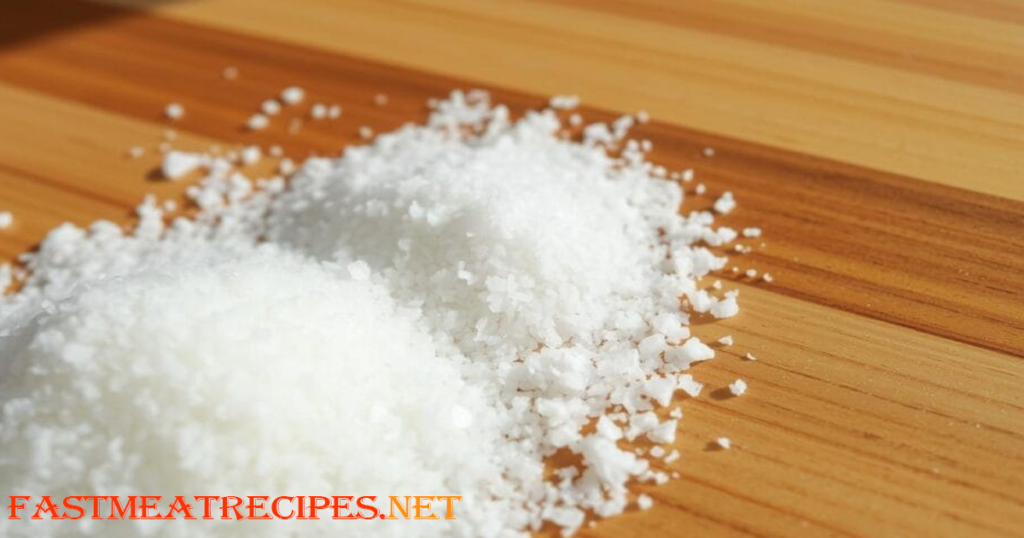As I removed the golden Brining Chicken thighs from the oven, the kitchen filled with a mouthwatering aroma. I couldn’t wait to taste them. The meat was incredibly tender and juicy, practically falling off the bone. After perfecting the art of Brining Chicken, the results were truly impressive.
If you’ve struggled with dry, flavorless Brining Chicken, fear not. Brining Chicken is the key to achieving moist, flavorful chicken thighs. In this article, I’ll provide six foolproof tips to help you master brining and elevate your chicken to the next level.
Brining Tips for Juicy, Flavorful Chicken Thighs – 6 Foolproof Methods
Brining is a simple yet powerful technique that elevates chicken thighs from dry and bland to juicy and flavorful. By soaking the chicken in a saltwater solution, brining enhances moisture retention and infuses layers of taste deep into the meat. Whether you’re grilling, roasting, or frying, brining is key to achieving mouthwatering results every time. Here are six foolproof tips to brine chicken thighs and transform your cooking.
Table of Contents
1. Use a Saltwater Solution with Kosher Salt
The foundation of a good brine is salt. Kosher salt is preferred due to its coarse texture and lack of additives, which allows for even distribution and better absorption of flavors. A general guideline is 1 cup of kosher salt per gallon of water. This combination helps break down proteins and traps moisture, creating juicier chicken thighs.
- Tip: Use a non-reactive container, like glass or stainless steel, to mix the brine solution and soak the chicken.
2. Let the Chicken Soak for 6-12 Hours
The length of time you brine the chicken depends on the cut. Chicken thighs typically require 6-12 hours in the brine. This allows the flavors to penetrate the meat fully, enhancing moisture and tenderness. Whole chickens or larger cuts may need 12-24 hours, but avoid exceeding 24 hours, as the meat can become overly salty or mushy.
- Tip: Refrigerate the chicken while brining to maintain food safety and prevent bacteria growth.
3. Enhance Flavor with Aromatics and Spices
Brining isn’t just about salt—it’s an opportunity to infuse your chicken with a variety of flavors. Add herbs, spices, garlic, citrus, or sugar to the brine. These additions enhance the depth of flavor, ensuring your chicken thighs are more than just moist—they’re full of flavor.
- Tip: Popular additions include thyme, rosemary, black pepper, or citrus zest to complement your cooking method.
4. Rinse and Pat Dry Before Cooking
After brining, rinse the chicken thighs under cold water to remove excess salt. Pat them dry with paper towels to ensure the skin stays crisp and the meat doesn’t become waterlogged during cooking. This step helps maintain a balance between juiciness and a crispy, golden exterior.
- Tip: Drying the chicken also helps seasonings stick better when you’re grilling, roasting, or frying.
5. Use High-Heat Cooking Methods for the Best Result
Brined chicken thrives when cooked using high-heat methods like grilling, roasting, or pan-searing. These methods lock in moisture and create a crispy, golden crust while keeping the interior juicy.
- Roasting: Use 450°F for crispy skin and tender meat.
- Grilling: High heat helps caramelize the surface, adding a smoky, charred flavor.
- Pan-searing: A quick sear in a hot skillet ensures a flavorful crust while keeping the inside moist.
6. Monitor Internal Temperature for Perfect Donenes
Brined chicken is forgiving when it comes to cooking time, but ensuring the internal temperature reaches 165°F guarantees safety and perfect texture. Use a meat thermometer to check for doneness and avoid overcooking.
- Tip: Brining helps prevent dryness, so even if you cook slightly longer than usual, the chicken will remain tender and juicy.
Brining vs. Non-Brining: The Difference Is Clear
| Method | Moisture Retention | Flavor Depth | Texture |
|---|---|---|---|
| Brining | High | Deep & complex | Juicy & tender |
| No Brining | Low | Limited flavor | Dry & tough |
By following these six foolproof tips, you’ll master the art of brining chicken thighs. The result? Juicy, flavorful, and perfectly cooked chicken every time, whether you’re grilling, roasting, or frying.
Brining Chicken Thighs for Juicy, Flavorful Results – A Step-by-Step Guide
Brining is a simple yet effective technique that transforms your chicken thighs into juicy, flavorful, and tender meals. By soaking the chicken in a saltwater solution, the proteins break down, allowing the meat to absorb more moisture and retain its juiciness during cooking. In this guide, we’ll explore everything you need to know about brining chicken thighs, including tips, recommended times, and the best practices for achieving mouthwatering results.

1. Why Brining is Essential for Juicy Chicken Thighs
Brining enhances chicken by improving moisture retention and flavor infusion. The process involves soaking the chicken in a saltwater solution, breaking down proteins and helping the meat absorb more water. This prevents dryness during cooking and results in tender, juicy chicken.
- Brining Benefits:
- Moisture retention prevents dry, tough meat.
- Infuses flavors deeply into the meat.
- Improves texture by keeping the chicken tender and juicy.
2. Choosing the Right Salt for Brining
The type of salt you use plays a significant role in brining. Kosher salt and table salt are the most commonly used options.
- Kosher Salt:
- Preferred due to its coarse texture and lack of additives.
- Dissolves slowly, ensuring even distribution of flavors.
- Doesn’t cloud the brine or affect its clarity.
- Table Salt:
- Fine-grained and often contains anti-caking agents.
- Dissolves quickly but may alter brine clarity and flavor.
- Requires less quantity compared to kosher salt.
- Tip: Most cooks prefer kosher salt for better results in brining.

3. Brining Chicken Thighs – Step-by-Step Process
Brining chicken thighs is a straightforward process that yields fantastic results.
- Brine Solution:
- 1/4 cup of kosher salt per 4 cups of water.
- Optional: Add herbs, spices, garlic, or citrus for extra flavor.
- Steps:
- Mix the salt in warm water until dissolved.
- Add any desired aromatics like thyme, rosemary, or garlic.
- Submerge the chicken thighs in the brine, ensuring they’re fully covered.
- Refrigerate for 4 to 6 hours (or up to 12 hours for whole chickens).
- Rinse the chicken under cold water and pat dry before cooking.
4. Brining Times: What You Need to Know
The brining time varies depending on the cut of chicken.
- Chicken Thighs:
4 to 6 hours is optimal.
Longer than 6 hours can result in overly salty or mushy meat. - Whole Chicken or Larger Cuts:
8 to 12 hours for best results.
Do not exceed 24 hours to prevent undesirable texture.
5. Cooking Methods for Brined Chicken Thighs
Brined chicken performs best with high-heat cooking methods that help seal in moisture and flavors.
- Roasting:
- Preheat oven to 450°F.
- Roast for 50-60 minutes, producing crispy skin and juicy meat.
- Grilling:
- High heat creates a flavorful char while keeping the inside moist.
- Grill for about 20-25 minutes until the internal temperature reaches 165°F.
- Pan-Searing:
- Sear on medium-high heat for 6-8 minutes per side.
- Ensures a golden crust and juicy interior.
6. Food Safety Tips for Brining
Brining chicken safely is crucial to prevent harmful bacteria.
- Refrigerate the Chicken:
Never leave brined chicken at room temperature. Always store in the fridge to avoid bacterial growth. - Discard Used Brine:
Never reuse brine. It can contain harmful bacteria. - Rinse and Pat Dry:
Rinse the chicken under cold water and pat dry to remove excess salt before cooking.
7. Conclusion: Juicy, Flavorful Chicken Thighs Made Easy
Brining chicken thighs ensures juicier, more flavorful results with minimal effort. By selecting the right salt, adhering to the proper brining times, and using high-heat cooking methods, you’ll achieve tender, moist chicken that will impress everyone at the dinner table.
Brining chicken thighs is a straightforward process that yields fantastic results. The brining time varies depending on the cut of chicken. Brined chicken performs best with high-heat cooking methods that help seal in moisture and flavors. Brining chicken safely is crucial to prevent harmful bacteria. Brining chicken thighs ensures juicier, more flavorful results with minimal effort. By selecting the right salt, adhering to the proper brining times, and using high-heat cooking methods, you’ll achieve tender, moist chicken that will impress everyone at the dinner table


2 thoughts on “Brining Chicken Thighs for Juicy Results – 6 Essential Tips”
Comments are closed.